You’ve probably explored Crete’s stunning beaches and ancient ruins, but have you discovered its hidden rural treasures? The Lasithi Plateau, nestled in eastern Crete, offers a unique window into the island’s traditional way of life. Here, you’ll find charming villages that seem frozen in time, each with its own story to tell.
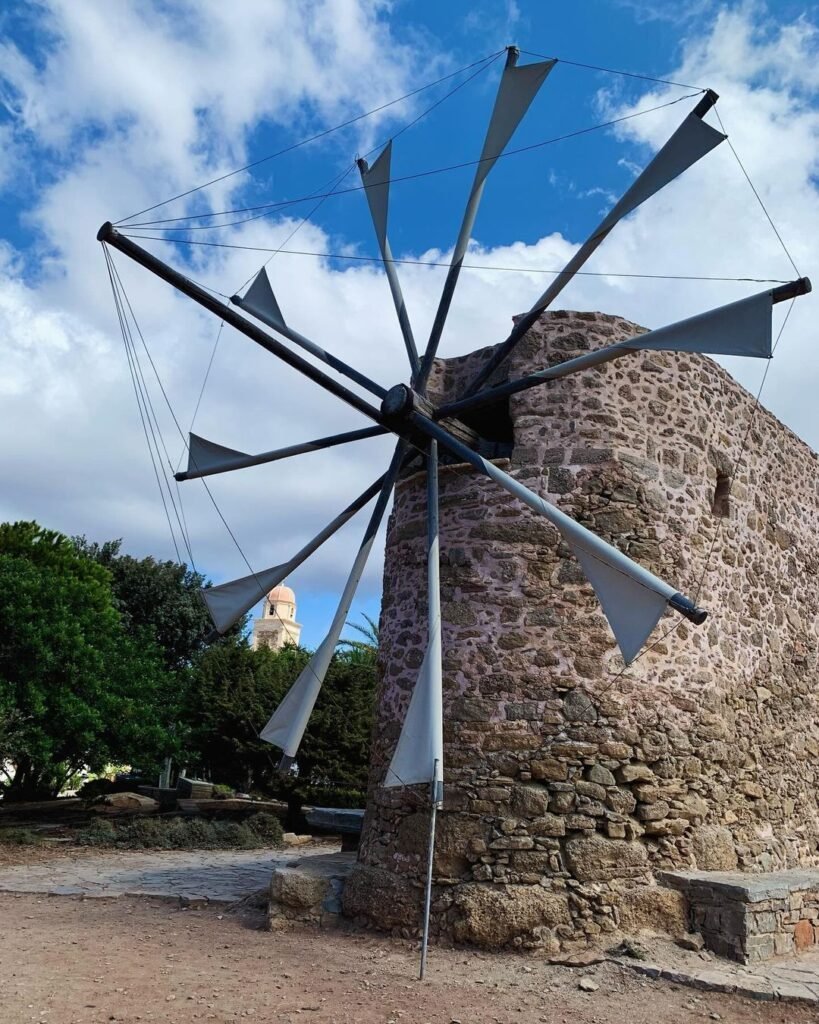
From iconic windmills to legendary caves, and from mouthwatering local cuisine to timeless architecture, these ten traditional villages in Lasithi promise an authentic Cretan experience you won’t soon forget.
The Lasithi Plateau
Crete’s Lasithi Plateau, a hidden gem nestled in the eastern part of the island, is surrounded by the Dikti mountain range. This high-altitude oasis, sitting around 840 meters above sea level, presents a dramatic landscape of a vast, fertile plain once dotted with thousands of iconic white-sailed windmills.
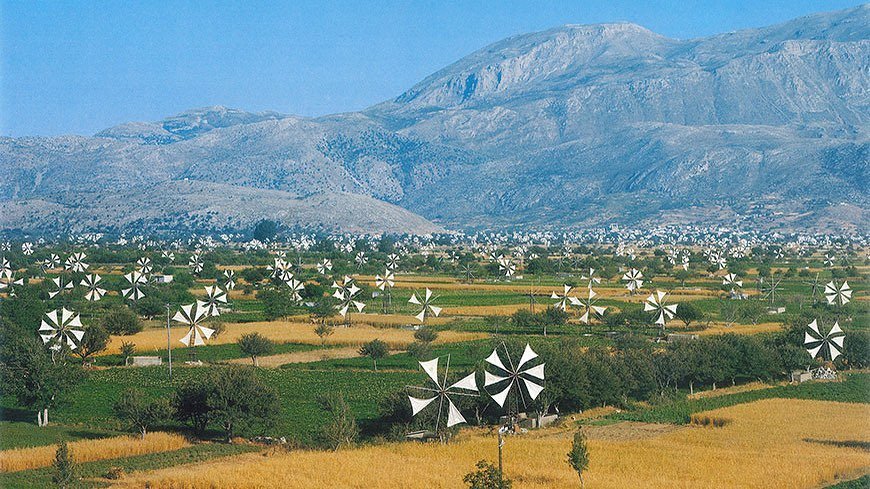
The plateau’s inhabitants are known for their resilience and strong sense of tradition, shaped by centuries of relative isolation. Unlike the coastal areas of Crete, the plateau has maintained a more homogeneous culture, preserving unique dialects, customs, and practices. This isolation, coupled with a history of resistance during periods like the Ottoman occupation, has fostered a fierce independence among the locals.
As you explore the plateau’s 10 traditional villages, you’ll feel as if you’ve stepped back in time. The air is crisp and clean, filled with the scent of wild herbs and blooming orchards. Friendly locals maintain age-old customs, often inviting visitors to share in their traditions.
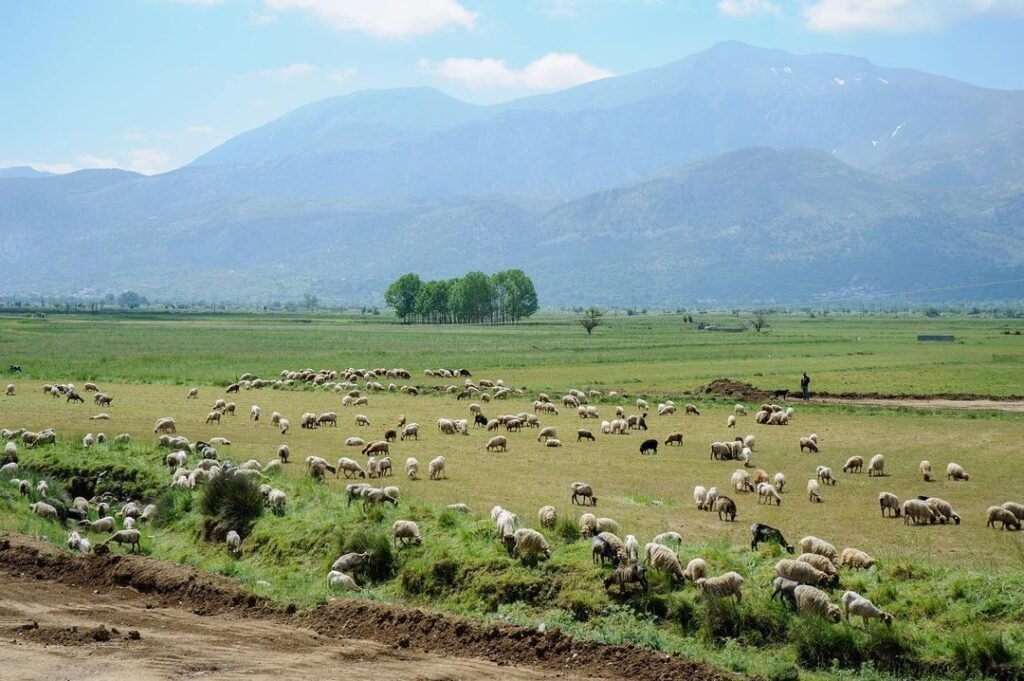
From its rich mythology to its agricultural heritage, the Lasithi Plateau offers a glimpse into Crete’s engaging past and vibrant present. The enduring spirit of its people, shaped by centuries of working this challenging yet beautiful land, adds a unique depth to the experience of visiting this remarkable region.
1. Tzermiado
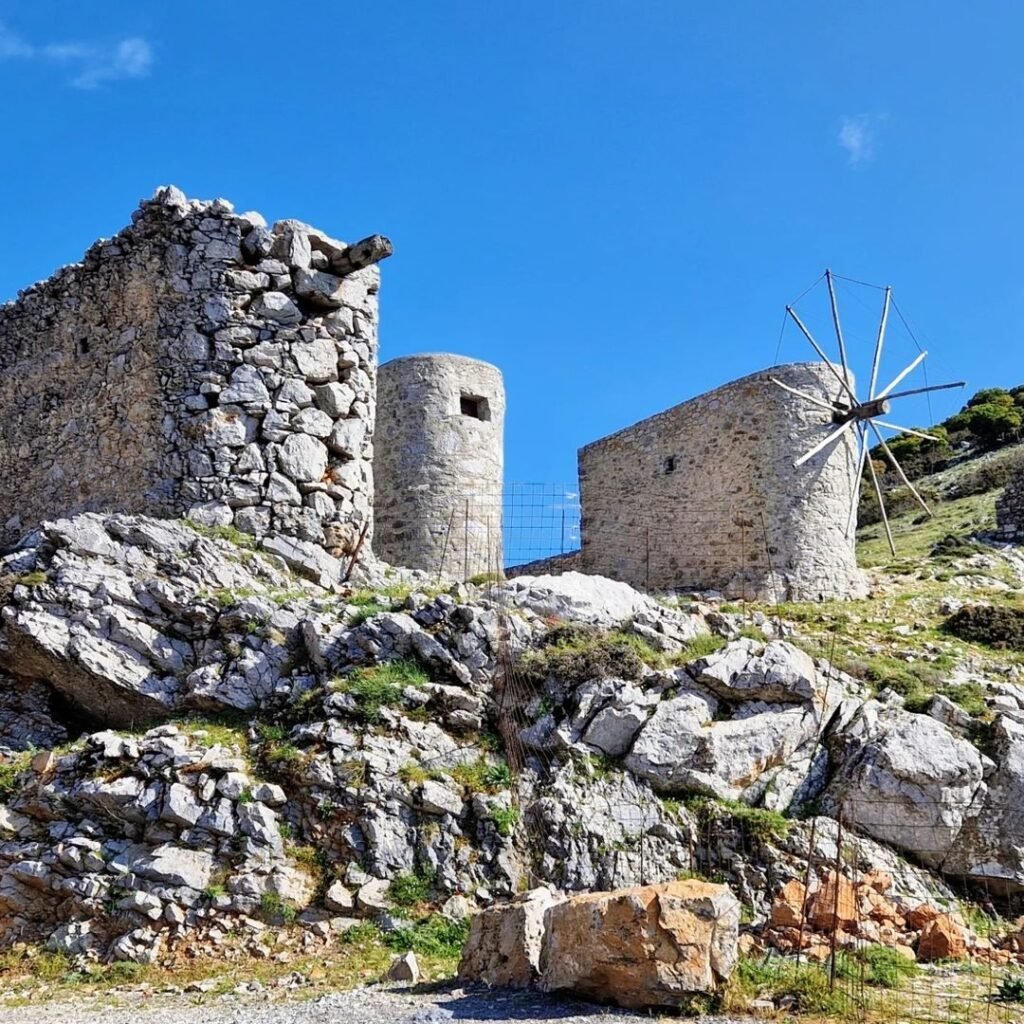
Tzermiado stands out as the largest village in the enchanting Lasithi Plateau region, situated at an altitude of 840 meters. This bustling agricultural center, with about 800 residents, serves as the administrative capital of the plateau. The village’s history stretches back to the Minoan period, as evidenced by local archaeological findings.
Tzermiado is known for its traditional stone houses with red-tiled roofs, many well-preserved over centuries. The surrounding fields showcase the village’s agricultural heritage, with locals cultivating potatoes, apples, and various vegetables in the plateau’s fertile soil.
This agricultural prowess is celebrated annually during the popular “Potato Festival,” which pays homage to the exceptional potato cultivation thriving in the unique microclimate of the Lasithi Plateau.
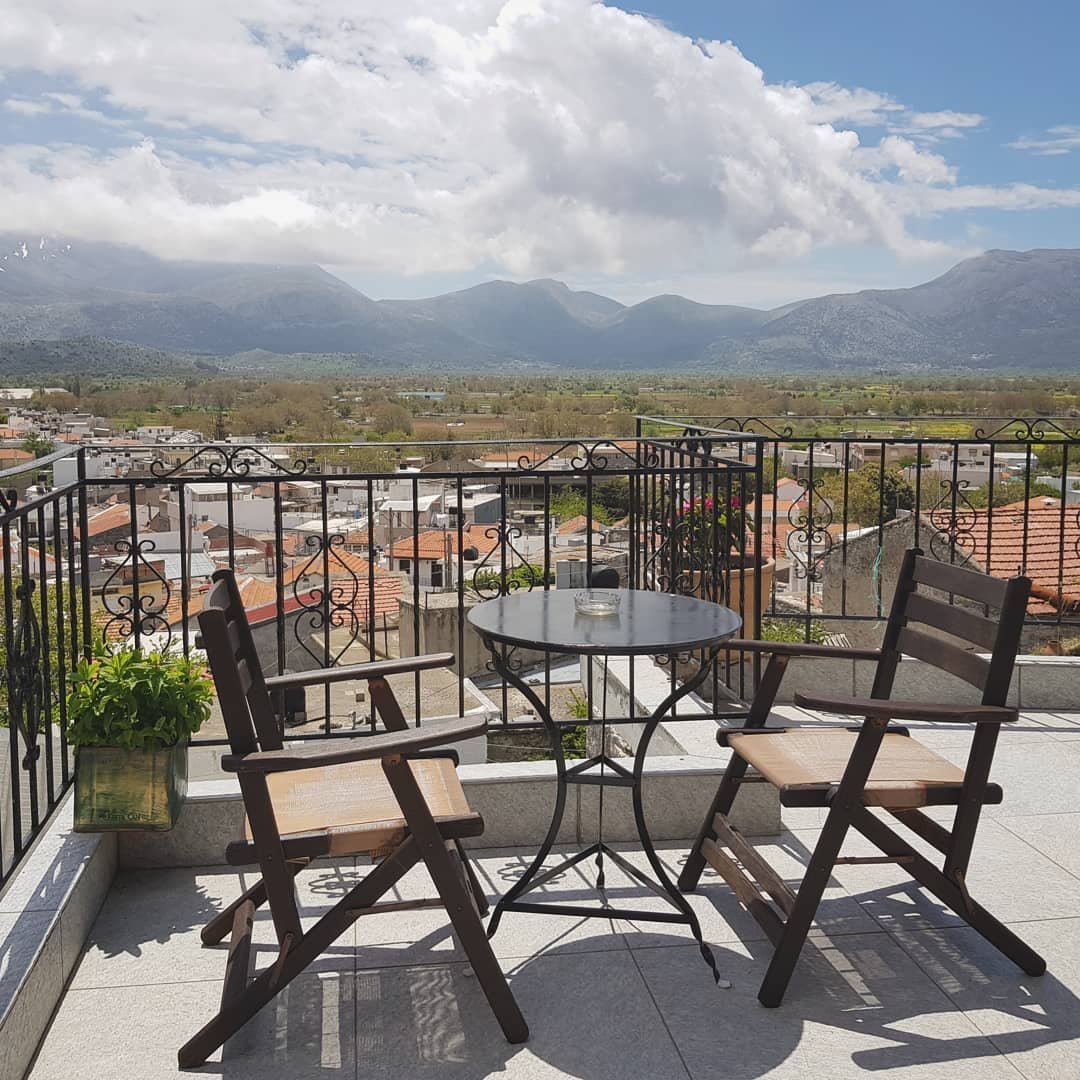
One of Tzermiado’s most notable features is its windmills. While only a fraction remain of the original 7,000-10,000 that once dotted the plateau, several restored examples can still be seen around the village. These windmills stand as a testament to the area’s agricultural ingenuity. Equally impressive are the remnants of the extensive drainage system known as “linies,” created by the Venetians to transform the once-barren plain into Crete’s most significant granary.
The village’s Folklore Museum, housed in a renovated 19th-century building, offers visitors insight into local history through its collection of traditional costumes, tools, and photographs.
Tzermiado’s tavernas serve authentic Cretan dishes like ‘ofto’ (a traditional dish of lamb, slow-roasted over an open fire) and ‘dakos’ (a Cretan barley rusk topped with fresh tomato, cheese, and olive oil). The village is also known for its locally produced thyme honey. As the plateau’s main hub, Tzermiado serves as an excellent base for exploring the region, including the nearby Diktaean Cave, which is associated with the myth of Zeus’s birthplace.
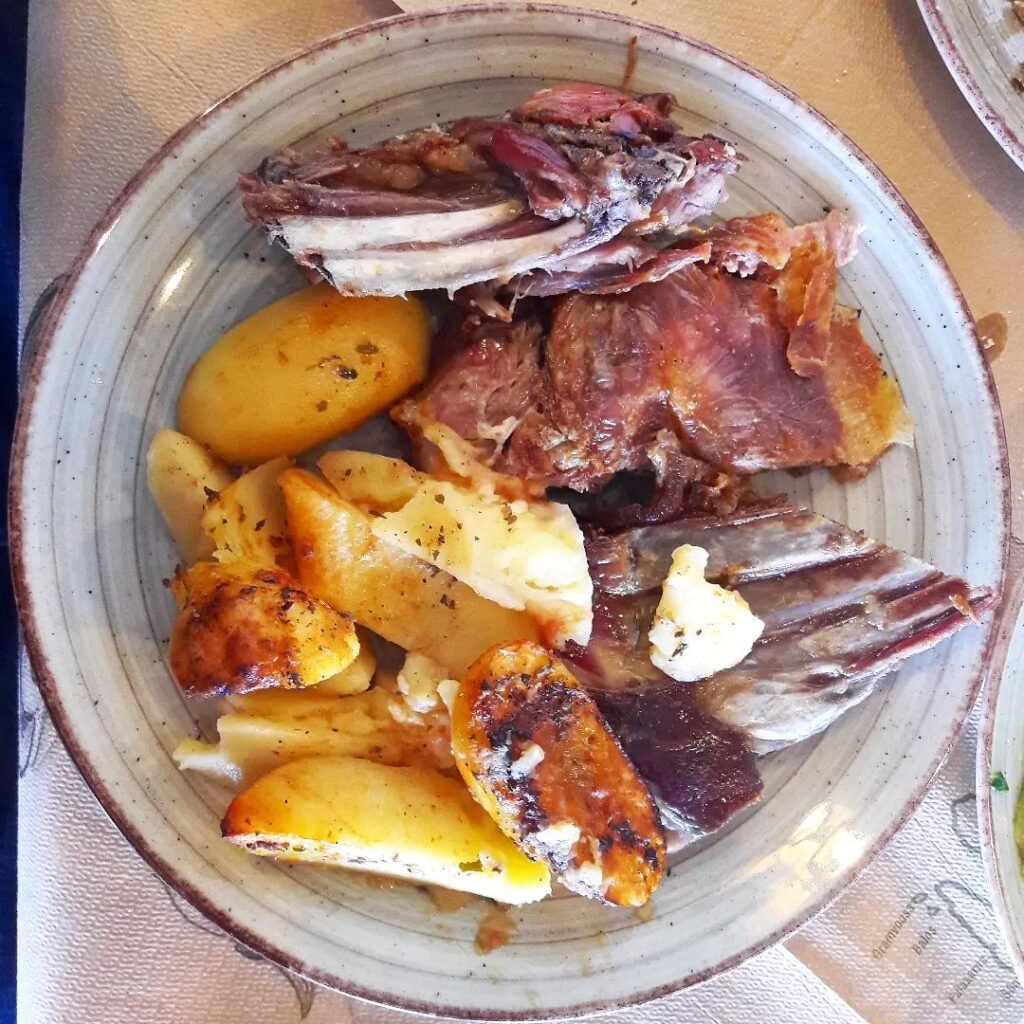
2. Psychro
Nestled at the foot of Mount Dikti, the small village of Psychro is renowned for its proximity to one of Crete’s most significant mythological sites: the Diktaean Cave, also known as the Psychro Cave. Located just 1 km from the village, this cave is traditionally believed to be the birthplace of Zeus, king of the ancient Greek gods.
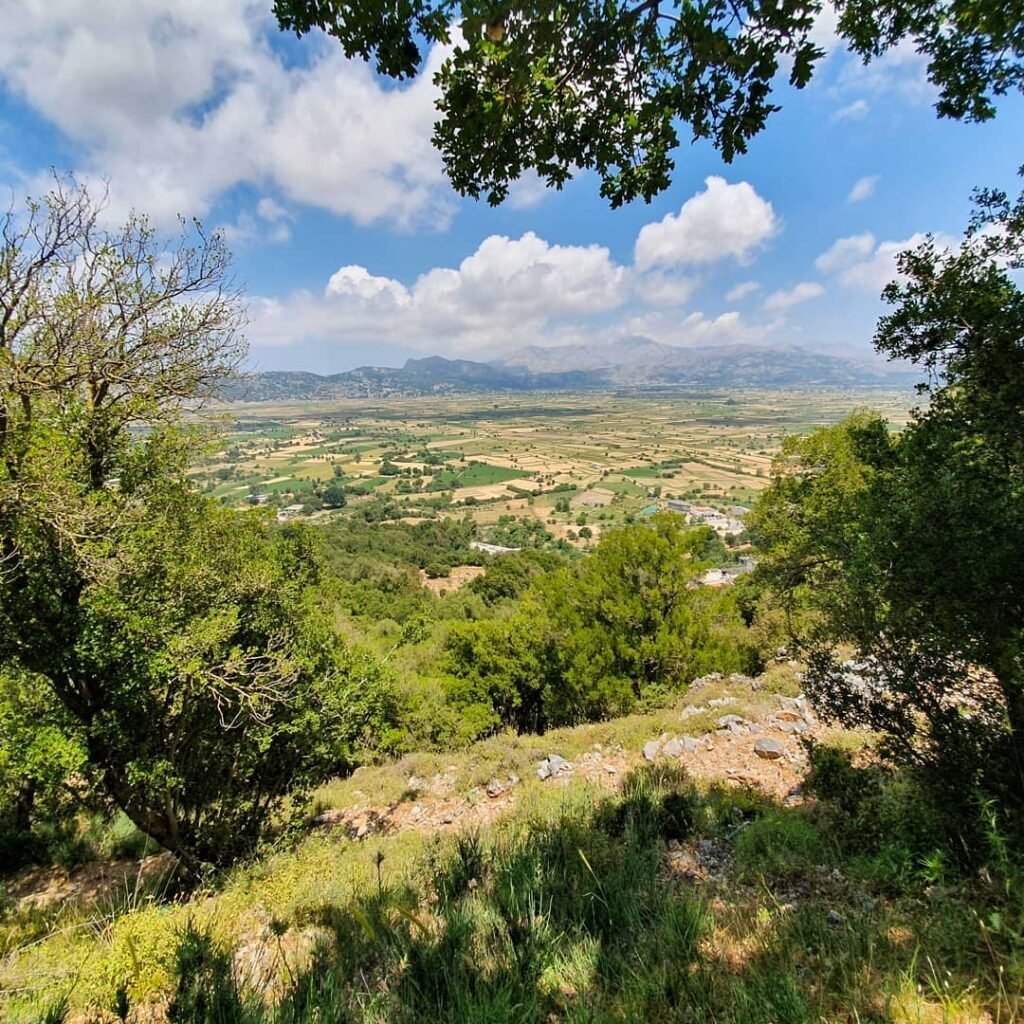
The village itself, with a population of around 100 residents, sits at an altitude of 828 meters. Psychro’s economy primarily revolves around tourism and agriculture, with locals cultivating olive trees and cereals on the surrounding slopes. As part of a circle of settlements in the Lasithi Plateau, Psychro embodies the area’s rich agricultural heritage and traditional Cretan charm.
Psychro’s claim to fame lies in its association with the Diktaean Cave, which has been a significant archaeological site. The cave features impressive stalactite and stalagmite formations and has yielded numerous votive offerings and artifacts dating from the Neolithic era to the Roman period.

These findings underscore the cave’s long-standing religious and cultural significance. Many of these archaeological treasures are now displayed in the Heraklion Archaeological Museum, offering visitors a glimpse into the area’s ancient past.
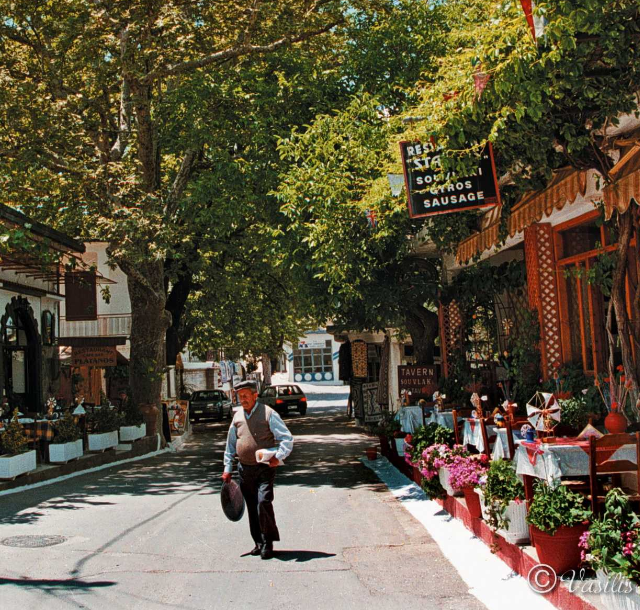
In the village, visitors can find traditional tavernas serving local specialties such as “chochlioi” (snails) and “antikristo” (lamb cooked on a spit). The nearby Lassithi Plateau Visitor Information Centre offers insights into the area’s unique ecosystem and cultural heritage.
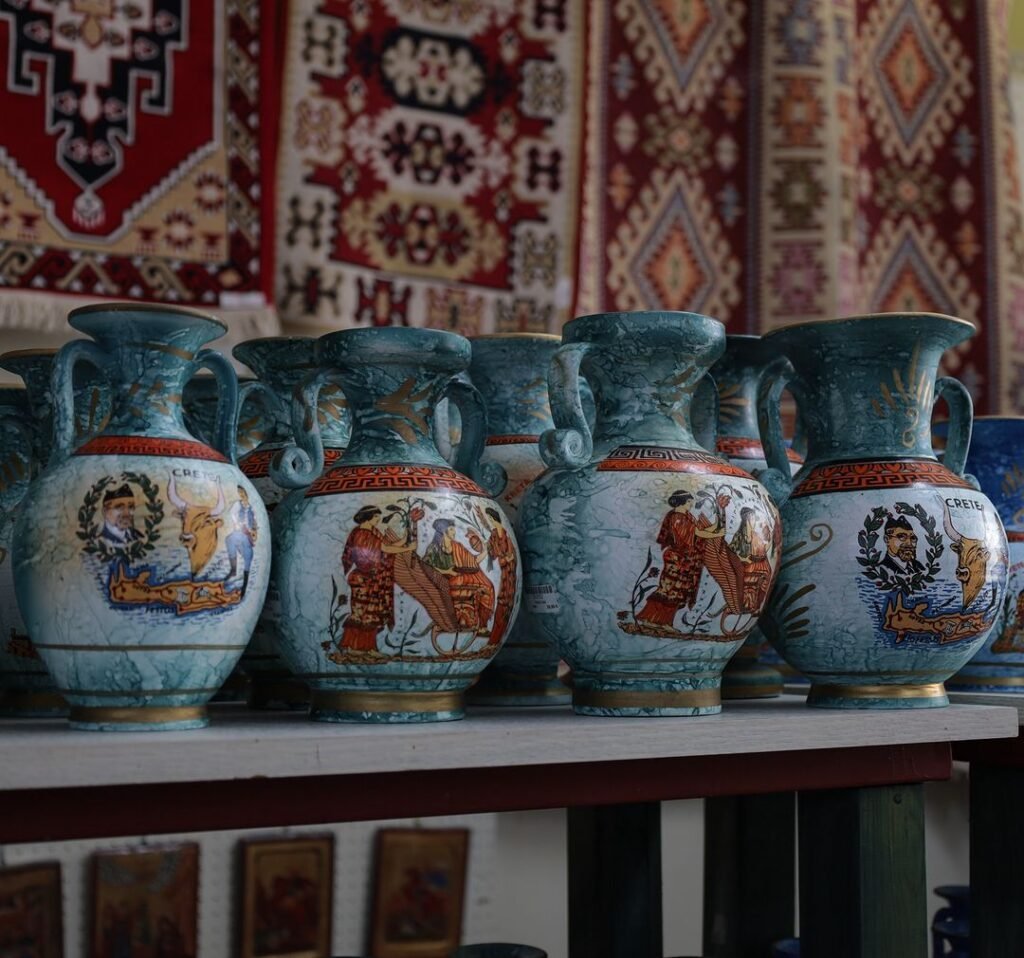
Psychro serves as an ideal starting point for hikers looking to explore the Dikti mountain range, with several trails offering panoramic views of the plateau and beyond. The village’s unique position in the heart of Cretan mythology and its role in preserving the island’s cultural heritage make it a fascinating stop for those interested in both natural beauty and ancient Greek lore.
3. Kritsa

Perched on a rocky hillside at an altitude of 375 meters, Kritsa is one of the oldest and most picturesque villages in Crete, with its own unique amphitheatrical layout. Nestled on a rocky hillside called Kastellos, the village is surrounded by verdant olive groves. Located 11 km from Agios Nikolaos, this traditional settlement of about 2,000 inhabitants is a treasure trove of rich history, distinctive architecture, and vibrant local culture.
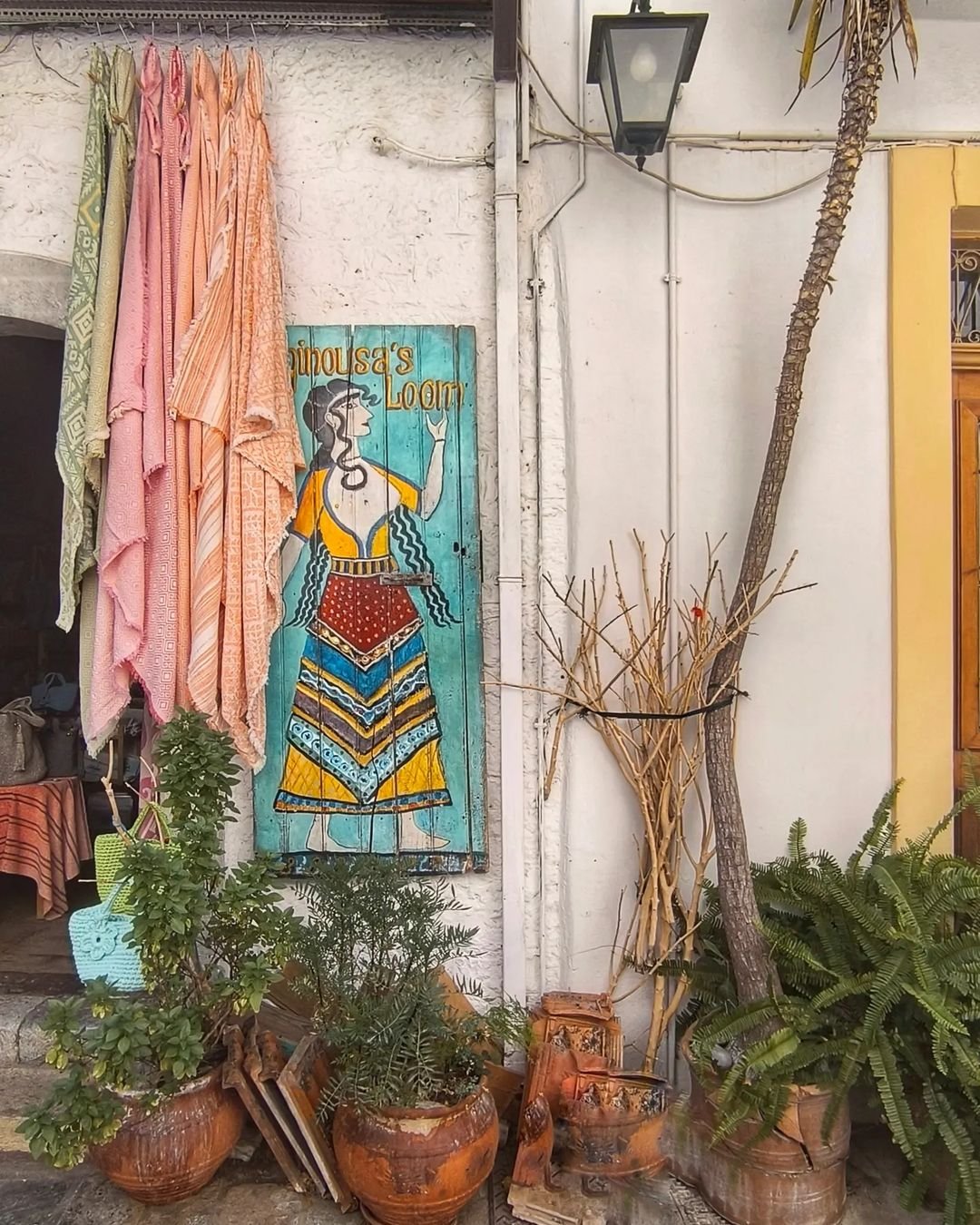
Dating back to the Byzantine era, Kritsa has played a pivotal role in Cretan resistance movements throughout the centuries. As you wander through its narrow, winding streets lined with whitewashed houses and vibrant bougainvillea, you’ll be transported back in time to traditional Cretan village life. Adding to its charm, Kritsa boasts a section with Cycladic-style architecture, featuring white-washed houses reminiscent of Santorini or Mykonos, creating an intriguing contrast to the traditional Cretan style.
The crown jewel of Kritsa is the 13th-century church of Panagia Kera, located just outside the village. This Byzantine church is famous for its well-preserved frescoes depicting scenes from the New Testament and the life of the Virgin Mary. The church stands as one of the most important Byzantine monuments in Crete.

Kritsa is celebrated as one of the most important centers of Cretan folk art, particularly known for its weaving tradition. The village’s women continue to produce intricate weavings and embroideries using traditional techniques. Visitors can observe this craft in action and purchase authentic Cretan textiles from local workshops.
For history enthusiasts, the village offers multiple points of interest. The Historical and Folklore Museum of Kritsotopoula tells the fascinating story of Rodanthi, a local heroine who fought against Ottoman occupation in 1817 disguised as a man. Just 3 km from Kritsa lie the ruins of the ancient Dorian city of Lato, dating from the 7th century BC. This archaeological site, once one of the most powerful Dorian towns in Crete, offers impressive ruins and panoramic views of Mirabello Bay.
The village comes alive with several tavernas serving traditional Cretan cuisine. Local specialties include “xerotigana” (fried pastry spirals with honey) and “kalitsounia” (cheese or herb pies). The annual Kritsa Festival in August is a vibrant celebration of local culture, featuring music, dance, and food.
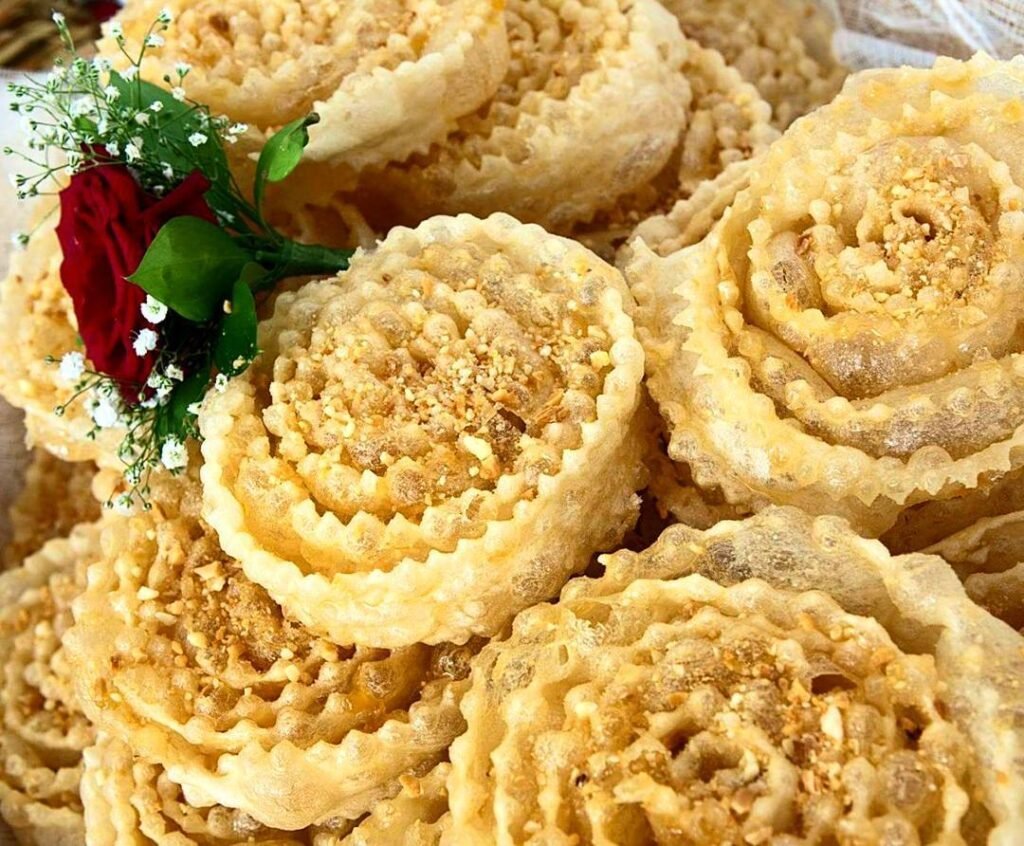
A truly unique spectacle awaits visitors in the evening when Kritsa is illuminated. The village’s lights create a mesmerizing effect, giving it the appearance of a scorpion sprawled across the hillside – a sight that perfectly encapsulates the magical allure of this ancient Cretan settlement.
4. Agios Konstantinos
Agios Konstantinos, situated at an altitude of 850 meters in the heart of the Lasithi Plateau, is a small village of approximately 100 inhabitants. Known for its traditional Cretan architecture and agricultural heritage, the village offers visitors a glimpse into authentic rural life on the island.
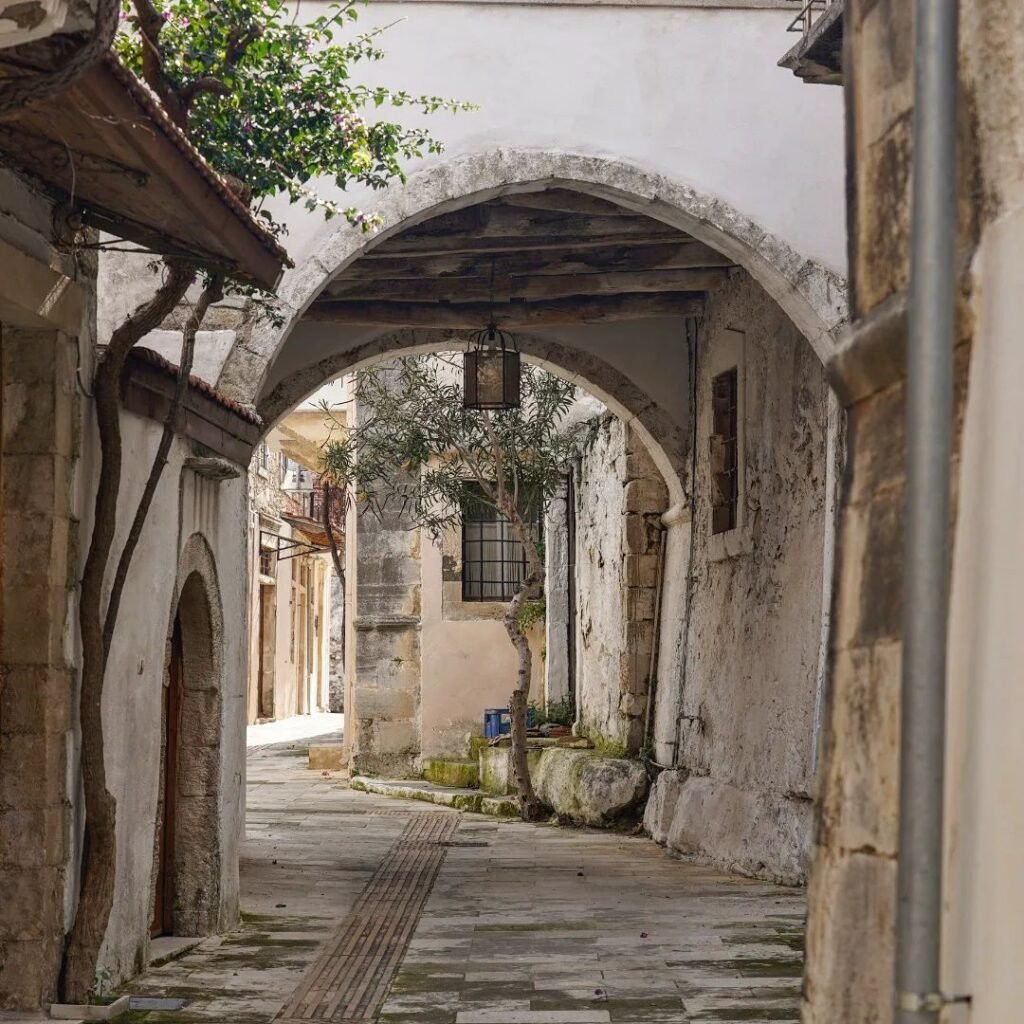
The origins of Agios Konstantinos date back to the 15th century when early cultivators, renting fields from the Venetian administration, first settled the area. This rich heritage is still visible today in the village’s traditional Cretan architecture, characterized by quaint, low houses and picturesque courtyards nestled within narrow lanes.
Interestingly, Agios Konstantinos is actually a union of smaller settlements, including Plathiano and metochi Avgusti, which merged over time. The village’s name comes from its church, dedicated to Saint Constantine. Historical records first mention the settlement as “San Zorzi” in 1630, reflecting its Venetian influence.
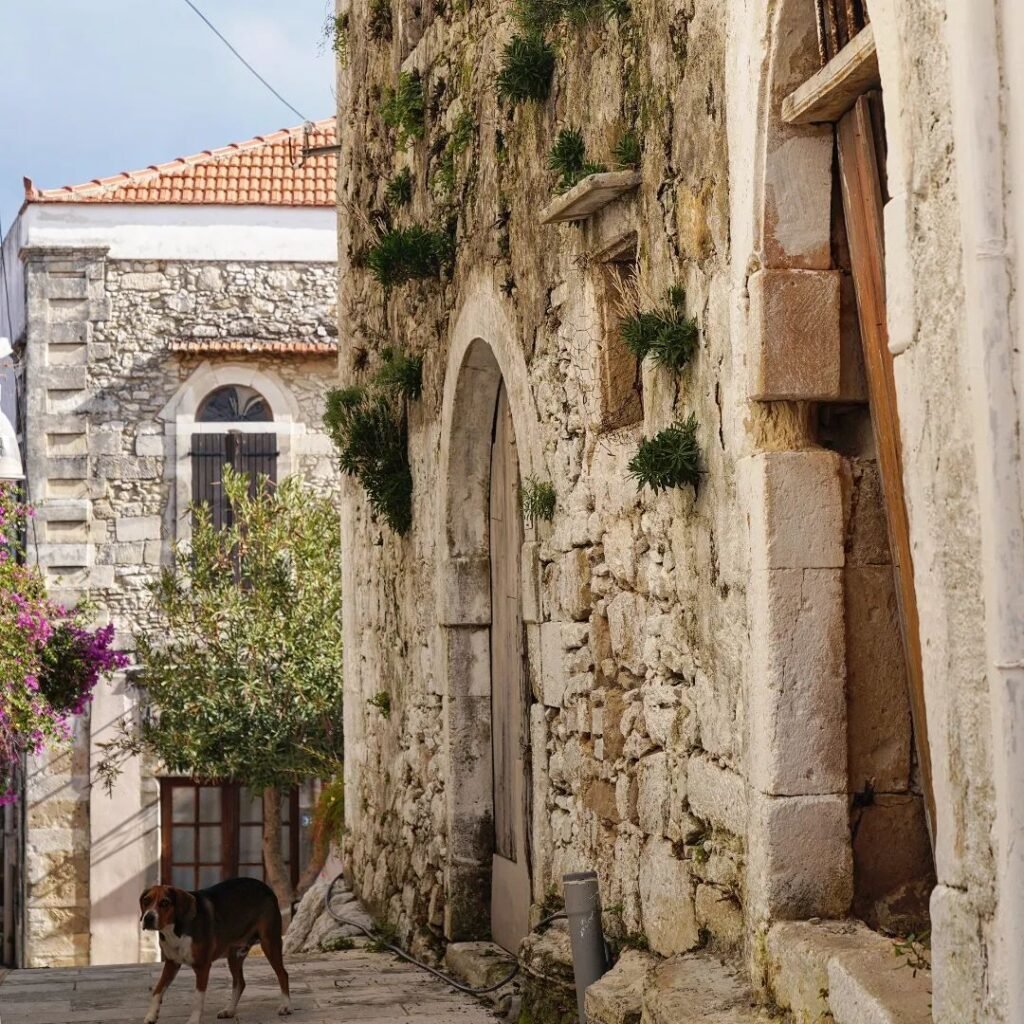
The church of Agios Konstantinos, a charming stone-built structure dating back to the 19th century, stands as the village’s namesake and centerpiece. Its interior features notable frescoes and a well-preserved wooden iconostasis, reflecting the community’s deep-rooted religious traditions.
Agios Konstantinos is particularly famous for its cheese production. The village is one of the primary producers of the renowned Cretan graviera, a hard sheep’s milk cheese with a slightly sweet, nutty flavor. Visitors can observe the cheese-making process in local workshops and purchase freshly made cheeses directly from producers.
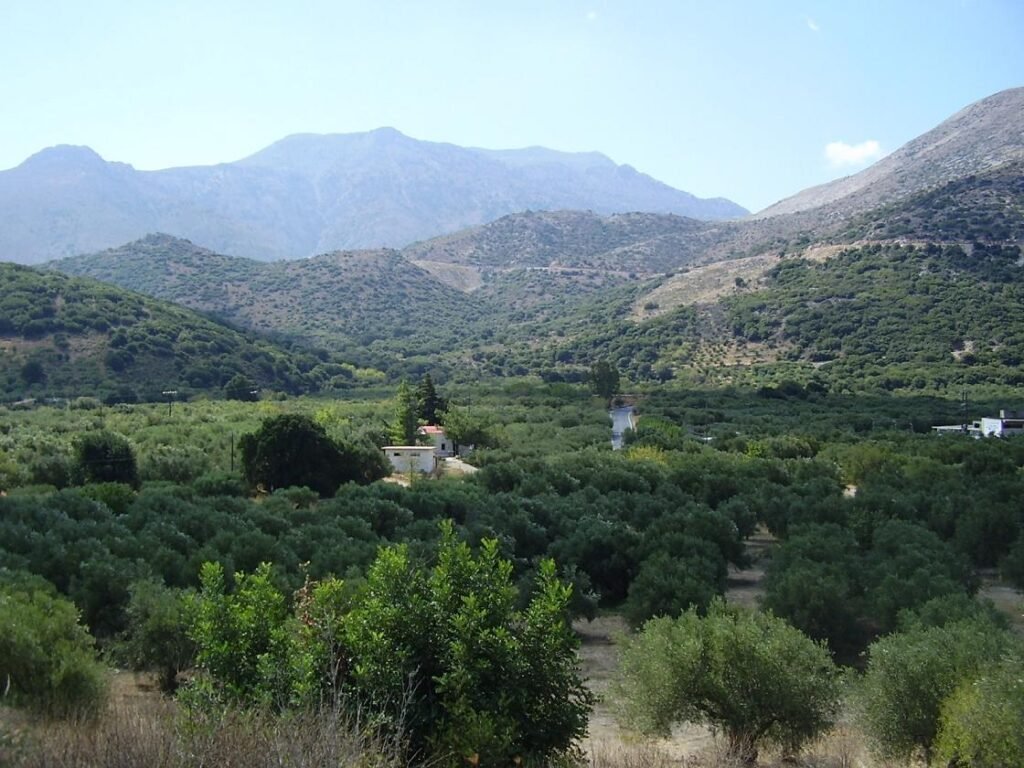
The surrounding area is dotted with old windmills, remnants of the plateau’s agricultural past. While most are no longer functional, they provide excellent photo opportunities and offer insights into traditional farming methods that once dominated life in the region.
In August, the village hosts its annual cultural festival, featuring traditional music, dance, and local culinary specialties. This event provides a unique opportunity to experience Cretan hospitality and immerse oneself in local customs.
5. Kaminaki
Kaminaki, one of the smallest villages in the Lasithi Plateau, is a hidden gem located at an altitude of 830 meters. With a population of fewer than 50 permanent residents, this tiny hamlet offers a tranquil escape from the more touristic areas of Crete.
The village’s name has an intriguing origin that speaks to its humble beginnings. “Kaminaki,” derived from the Greek word for “chimney,” is said to have been inspired by the distinctive smokestack of the settlement’s first inhabitant. This pioneering resident, known as Faouro (a name rooted in the Latin word for “blacksmith”), left such an impression that his chimney became the village’s namesake, rather than the small kilns once used for pottery that were previously thought to be the source of the name.
Despite its small size, Kaminaki boasts a remarkable 14th-century Byzantine church dedicated to Agios Georgios (St. George). The church’s frescoes, though partially preserved, offer a fascinating glimpse into medieval Cretan art.
Agriculture remains the primary occupation in Kaminaki, with locals cultivating potatoes, apples, and vegetables. The village is surrounded by beautiful hiking trails, offering visitors opportunities to explore the unique flora and fauna of the Lasithi Plateau.
While Kaminaki has limited tourist facilities, its single kafeneion (traditional Greek café) serves as a gathering place for locals and visitors alike. Here, one can experience authentic Cretan hospitality and perhaps sample some raki, the local spirit, while soaking in the village’s tranquil atmosphere.
6. Mesa Lasithi
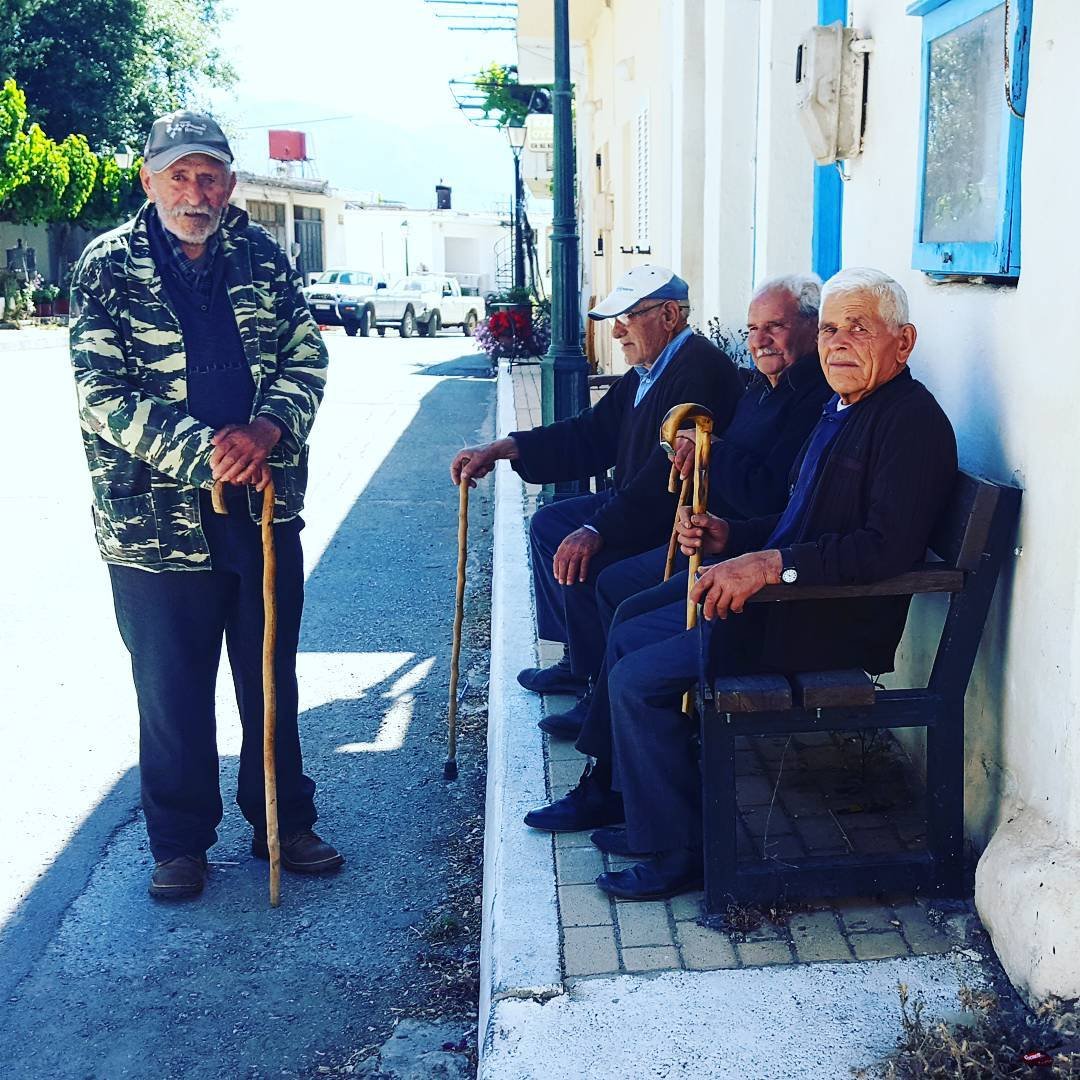
Mesa Lasithi, also known as Mesi, is a historic village located in the western part of the Lasithi Plateau at an altitude of 840 meters. Situated near the foothills of Mount Samia and in close proximity to the Krystallenia Monastery, this picturesque settlement boasts a rich history that stretches back to antiquity. Archaeological discoveries in the area suggest human habitation dating as far back as the Late Minoan period, if not earlier, underscoring the village’s historical significance.
With roots deep in Cretan history, Mesa Lasithi has witnessed centuries of cultural evolution. The village’s strategic location made it a crucial center of resistance during the 19th-century Cretan revolts against Ottoman rule. Today, visitors can still observe the remnants of old fortifications that once safeguarded the village during tumultuous times.
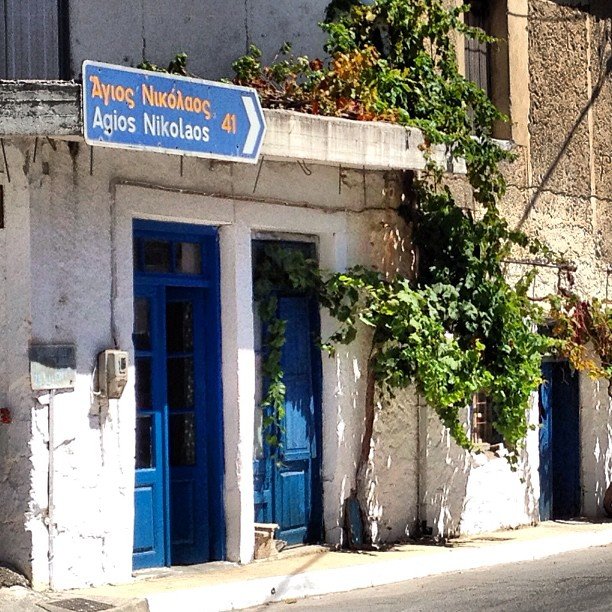
Mesa Lasithi is home to several notable churches, including the 14th-century church of Timios Stavros (Holy Cross) and the church of Panagia (Virgin Mary), both featuring impressive frescoes. These religious monuments not only attest to the village’s long-standing importance as a spiritual center but also showcase its artistic heritage. From 1850 to 1940, Mesa Lasithi was renowned for its informal school of woodcarving, which produced masterpieces that now grace various churches throughout Crete, further cementing its cultural legacy.
The village is known for its traditional stone houses, many of which have been well-preserved or carefully restored. The central square, shaded by ancient plane trees, serves as the heart of community life and hosts the annual August festival celebrating the Dormition of the Virgin Mary.
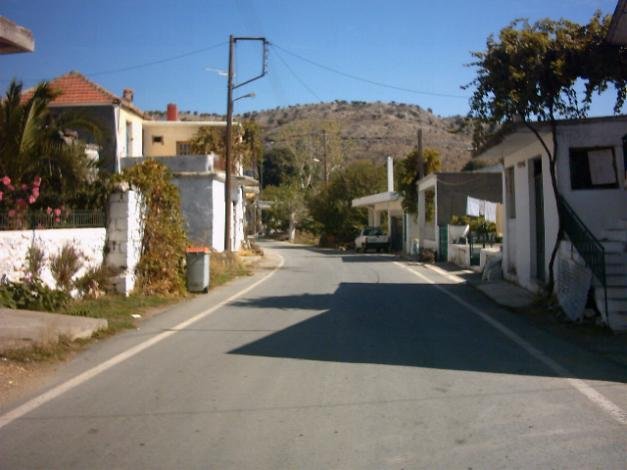
Agriculture has long been the backbone of Mesa Lasithi’s economy. While the surrounding fields continue to yield potatoes and grains, the village was once famous for its high-quality apple production. However, this industry has seen a decline in recent years. Despite this setback, Mesa Lasithi remains known for its excellent honey, produced from the diverse flora of the plateau.
Among the traditional culinary delights of Mesa Lasithi is the distinctive dish known as Ξυνόχοντρος (xynochondros), a fermented grain preparation that exemplifies the region’s resourceful food preservation techniques. This sour frumenty, made by combining cracked wheat or bulgur with sour milk or yogurt, embodies the deep-rooted gastronomic heritage of the area. Ξυνόχοντρος (xynochondros) not only serves as a flavorful local specialty but also represents a tangible link to Mesa Lasithi’s agricultural traditions and communal practices.
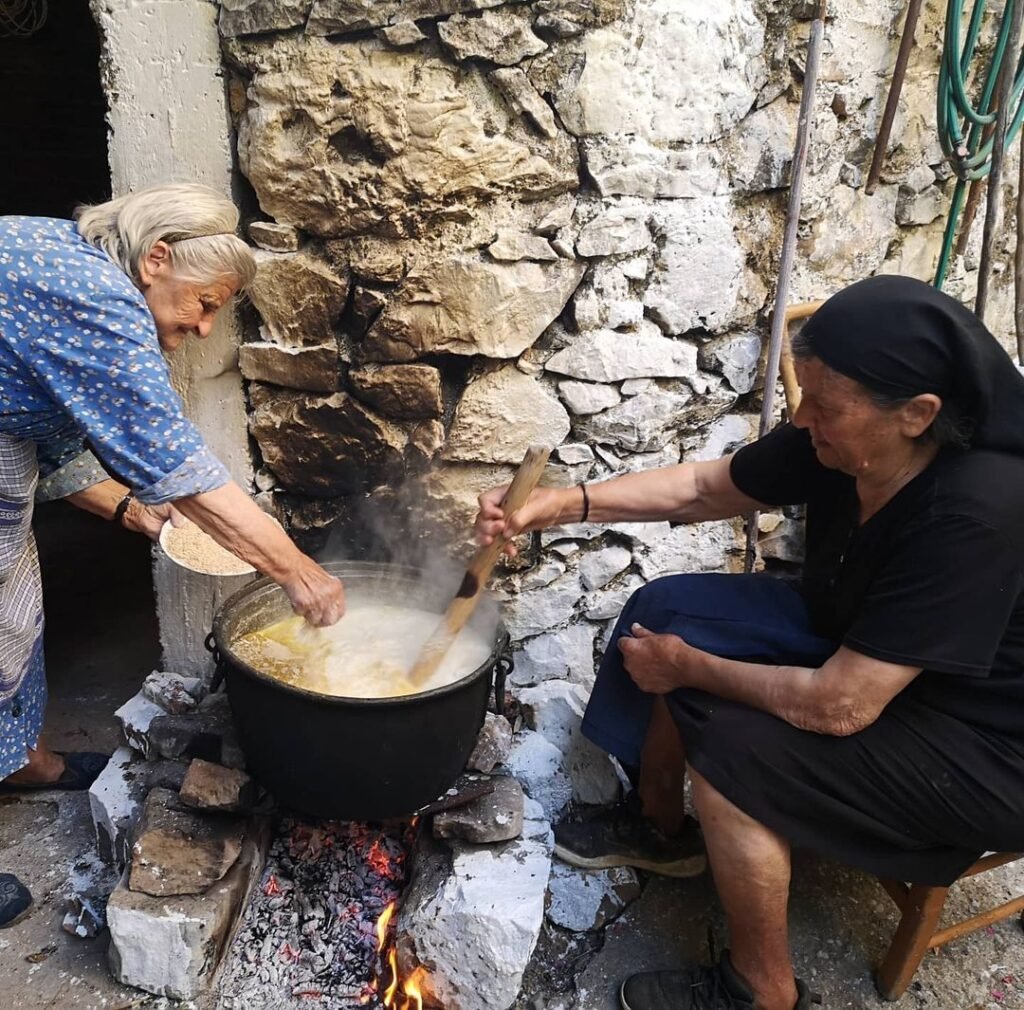
For nature enthusiasts, Mesa Lasithi offers access to several hiking trails that lead into the surrounding Dikti mountains, providing panoramic views of the plateau and opportunities to observe local wildlife and plant species.
The village’s population has fluctuated over the years, reflecting broader demographic trends in rural Crete. After reaching a peak of 489 inhabitants in 1991, the population experienced a decline, dropping to 175 in 2001. Today, the village is home to around 300 residents, who continue to uphold its rich traditions and warm hospitality.
7. Avrakonte
Avrakonte, whose name means “hanging rocks” in Greek, is a small village tucked away in the eastern corner of the Lasithi Plateau at an altitude of 850 meters. With a population of fewer than 100 residents, this picturesque settlement is distinguished by its unique geological surroundings.
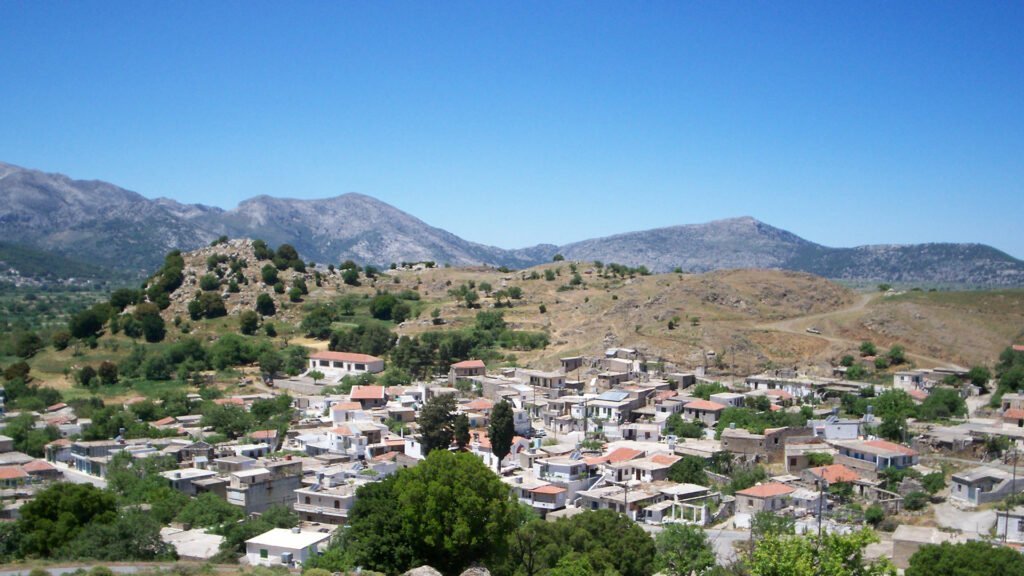
The village is nestled beneath imposing limestone cliffs, which have shaped both its name and its character. These dramatic rock formations not only provide a stunning backdrop but also offer natural protection, which proved valuable during historical periods of conflict.
Avrakonte is known for its traditional stone architecture, with many houses featuring the characteristic red-tiled roofs common to the region. The village’s narrow, winding streets offer charming walks and unexpected views of the surrounding landscape.
The local economy is primarily based on agriculture, with residents cultivating olives, vegetables, and fruits in the fertile soil of the plateau. The village is also known for its production of high-quality honey, particularly thyme honey from the nearby mountain slopes.
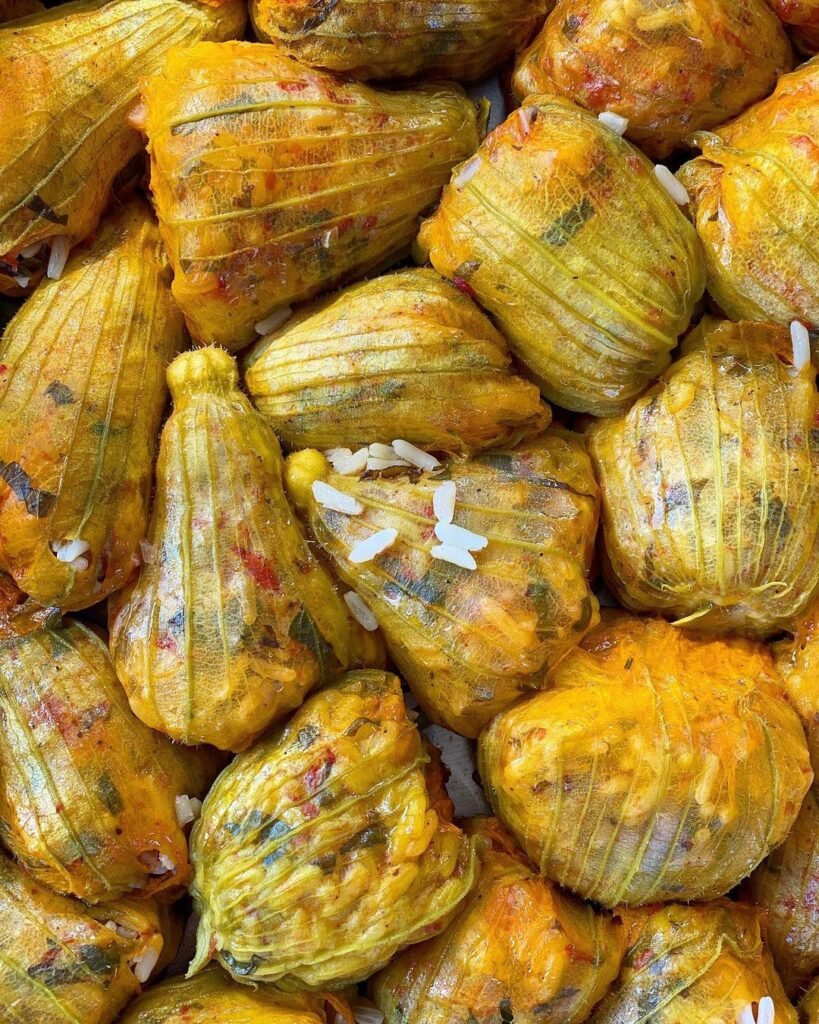
Visitors to Avrakonte can immerse themselves in traditional Cretan culture, particularly during August when the village hosts a courgette festival during the fasting period. This event celebrates local agriculture and culinary traditions, offering a unique insight into rural Cretan life.
A small, centuries-old church dedicated to Agios Georgios (St. George) stands at the heart of the village. Its simple architecture and weathered stone walls reflect the enduring faith and resilience of the local community.

For visitors interested in geology and nature, Avrakonte serves as an excellent starting point for exploring the unique rock formations of the area and hiking in the surrounding Dikti mountains.
8. Marmaketo
Marmaketo, situated at an altitude of 830 meters in the Lasithi Plateau, is a village of approximately 200 inhabitants renowned for its pristine spring water and unique religious traditions. The village’s name is believed to derive from the combination of “marmar” (marble) and “kato” (below), possibly referring to the limestone formations beneath the village.
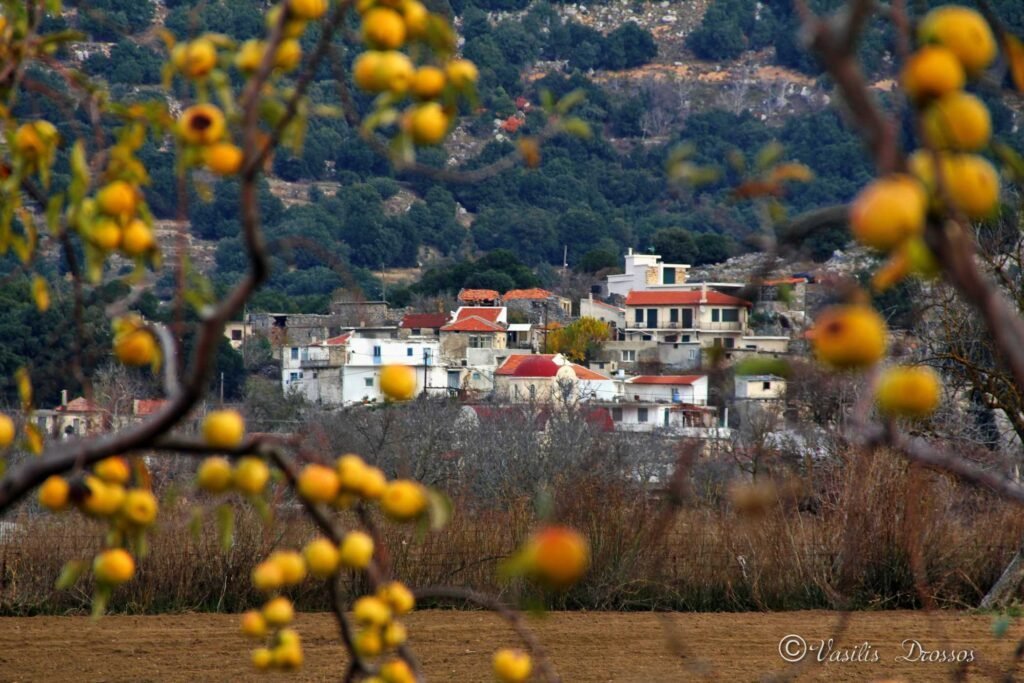
The village’s claim to fame is its central fountain, which provides a continuous flow of crystal-clear spring water. This water source has been vital to the community for centuries and is said to have therapeutic properties. Visitors often stop to fill their bottles with this pure mountain water.
Marmaketo’s traditional architecture is well-preserved, with stone houses lining narrow streets that offer glimpses into authentic Cretan village life. The village square, centered around the famous fountain, serves as a gathering place for locals and visitors alike.
The church of Saint John the Theologian in Marmaketo is home to one of the most unique Epitaphios in Greece. During Holy Week, local women decorate the Epitaphios with wild orchids known as “violes” of Lambrini, creating a stunning display that is central to a cherished local tradition. This custom, which includes the belief that the dried flowers “bloom” again on Saint John’s feast day on May 8th, exemplifies the village’s deep-rooted faith and connection to nature.
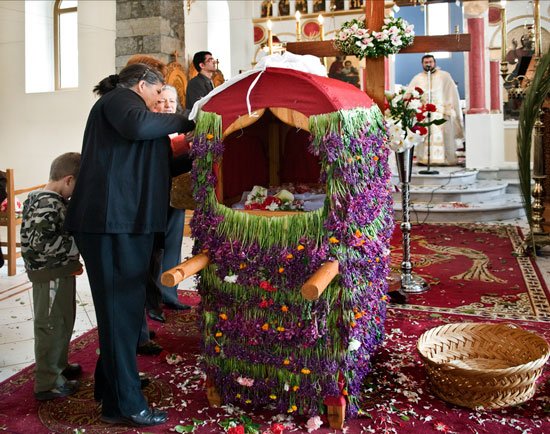
Agriculture plays a significant role in Marmaketo’s economy, with locals cultivating potatoes, apples, and other crops suited to the plateau’s unique microclimate. The village is also known for its textile tradition, with some residents still practicing traditional weaving techniques.
The nearby Trapeza cave, located just 1.5 km from the village, is an important archaeological site with findings dating back to the Neolithic period (circa 6000-3000 BCE). Although not open to the public, its proximity adds to Marmaketo’s historical significance.
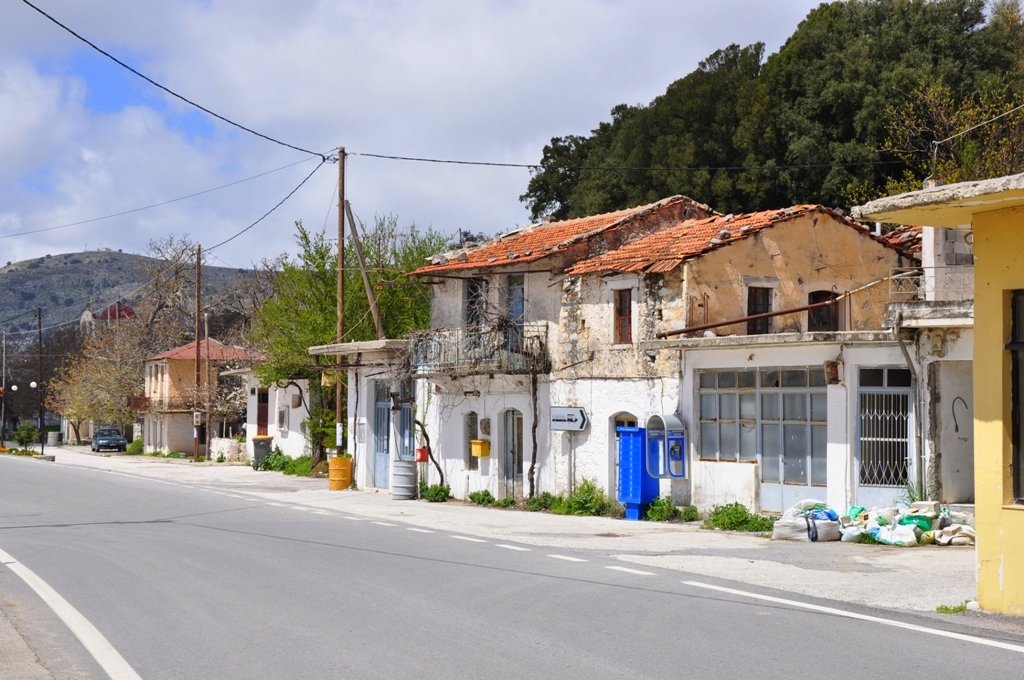
9. Lagou
Lagou, a picturesque village nestled in the Lasithi Plateau at an altitude of 840 meters, is renowned for its bountiful apple orchards. With a population of around 150 residents, this small agricultural community plays a significant role in Crete’s apple production.
The history of Lagou stretches back centuries, with its first recorded mention appearing in the Turkish census of 1671. At that time, the village was listed as having just 4 haratsia (tax-paying units), hinting at its humble beginnings and gradual growth over the years.
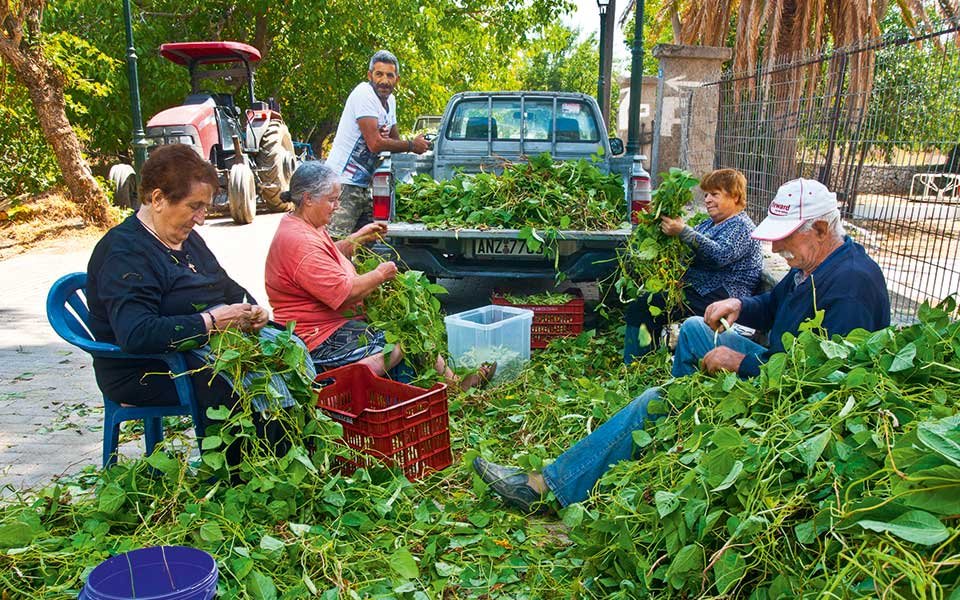
Lagou’s location in a slight depression of the plateau creates a unique microclimate ideal for apple cultivation. The village’s orchards produce several varieties of apples, including the local Malum variety, known for its crisp texture and sweet-tart flavor.
In late September to early October, Lagou comes alive with the annual apple harvest, offering visitors a chance to observe or even participate in traditional harvesting methods and enjoy various apple-based products, from fresh cider to homemade apple pies.
While Lagou may not boast a consistent architectural identity or classical village beauty, its charm lies in its people, atmosphere, and the surrounding natural landscape. The village’s agricultural heritage is evident in its practical architecture, with many houses featuring large courtyards once used for drying crops. The central square, shaded by plane trees, is home to a few traditional kafeneia where locals gather to socialize.
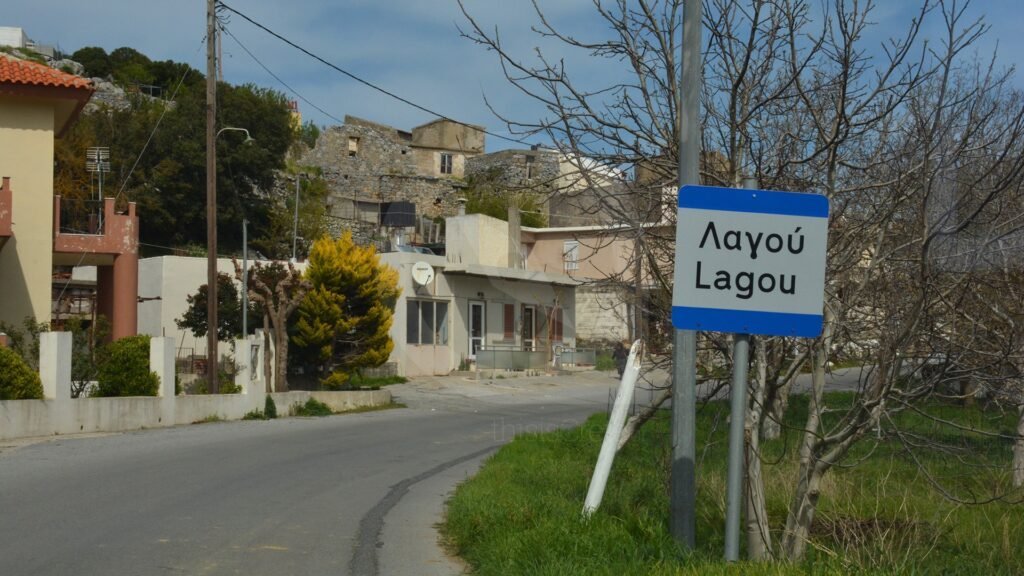
Visitors to Lagou and its neighboring villages like Marmaketo, Pinikiano, and Avrakontes can experience a slice of authentic Cretan life. It’s not uncommon to see local women wearing traditional headscarves or men enjoying tsikoudia (a potent local spirit) in the morning, maintaining age-old customs that have largely disappeared in more touristy areas.
A few restored windmills dot the landscape around Lagou, offering picturesque views of the surrounding apple orchards. These structures serve as reminders of the plateau’s agricultural heritage.
For nature enthusiasts, the area around Lagou offers several walking trails through the orchards and into the surrounding hills, providing beautiful views of the plateau and opportunities to observe local flora and fauna.
10. Plati
Plati, one of the most intriguing villages in the Lasithi Plateau, is located at an altitude of 840 meters and has a population of approximately 300 residents. The village’s name, meaning “flat” in Greek, refers to its position on a level part of the plateau. However, Plati’s significance extends far beyond its topography, as it boasts a rich archaeological heritage that spans millennia.
The village’s historical importance was dramatically underscored in 1913 when excavations led by R.M. Dawkins unearthed a treasure trove of ancient structures. These discoveries included three Minoan buildings from the Late Minoan I period, as well as structures from the Greek era.
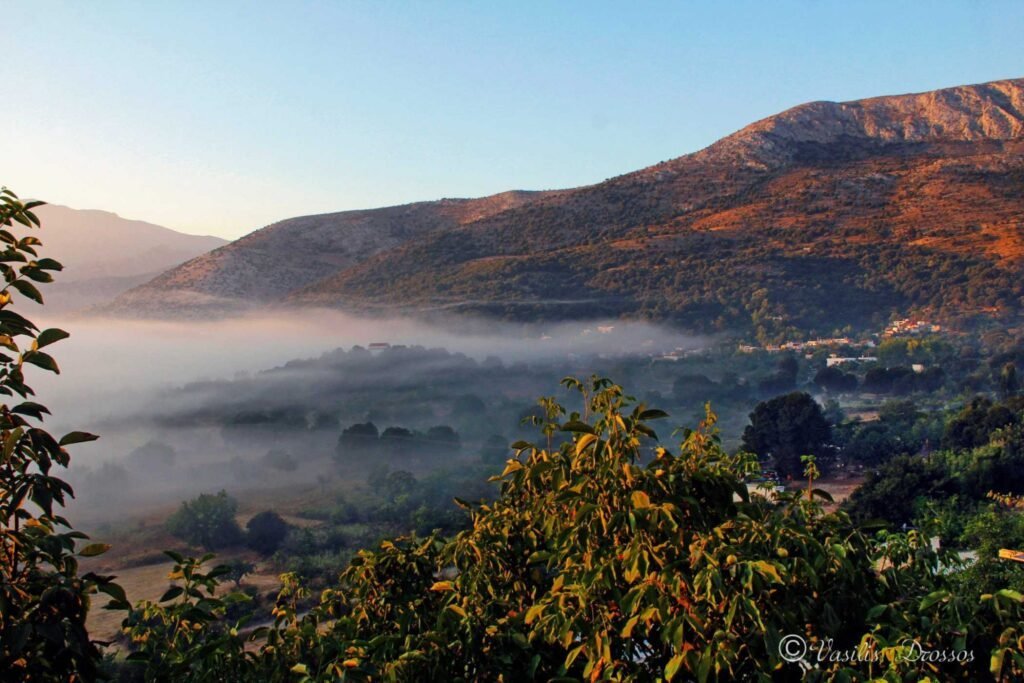
Perhaps the most fascinating find was a Π-shaped square dating back to the Late Minoan III period. This square, surrounded by three symmetrically placed building complexes, has led archaeologists to speculate about its purpose – perhaps an original settlement design or even a palace structure reminiscent of the famed Knossos.
The village’s ancient legacy is complemented by its proximity to other significant archaeological sites. Just 2 km from Plati lies Karphi, an important Late Minoan III settlement perched high in the Dikti mountains. Inhabited until the early Iron Age (circa 1100-900 BCE), Karphi offers visitors another unique window into Crete’s ancient past.
Today, Plati’s rich history is reflected in its diverse architecture, which includes traditional Cretan houses alongside remnants of older structures. The village is known for its well-preserved kafeneia (coffee houses), where visitors can experience authentic Cretan hospitality. These kafeneia often double as impromptu museums, their walls adorned with old photographs and artifacts that narrate the story of the village and the plateau.
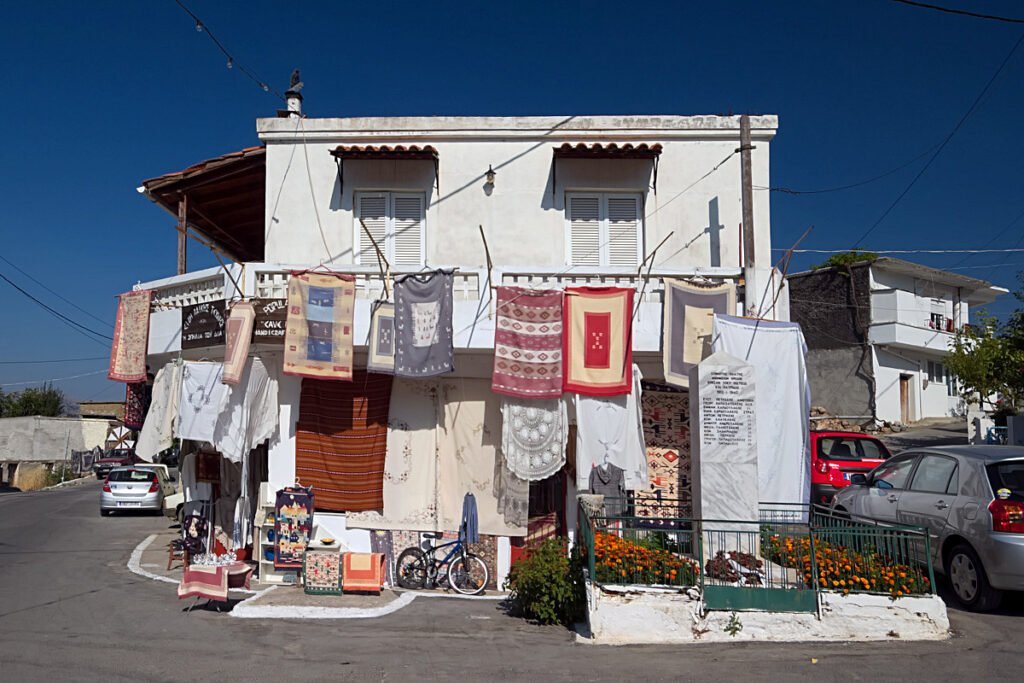
Agriculture remains a crucial part of Plati’s economy, with potatoes being the primary crop. The village is also renowned for its dairy products, particularly a soft, creamy cheese similar to anthotyros. For those interested in local crafts, Plati is home to several artisans who continue traditional woodcarving and textile-making practices, offering visitors the chance to observe these age-old skills in action and purchase unique, handmade souvenirs.
Plati serves as an excellent base for exploring both the natural beauty of the Lasithi Plateau and its archaeological treasures. Several hiking trails lead to nearby caves and ancient sites, allowing visitors to immerse themselves in the area’s rich natural and cultural landscape.
Experience Lasithi: A Small-Group Day Tour Adventure
For those eager to experience the essence of traditional villages in Lasithi without the logistics of self-driving, consider joining a small-group tour through Lasithi’s hidden gems. Led by a local guide whose encyclopedic knowledge of Cretan history is matched only by his infectious enthusiasm and playful spirit, this intimate journey takes you deep into the authentic heart of eastern Crete.
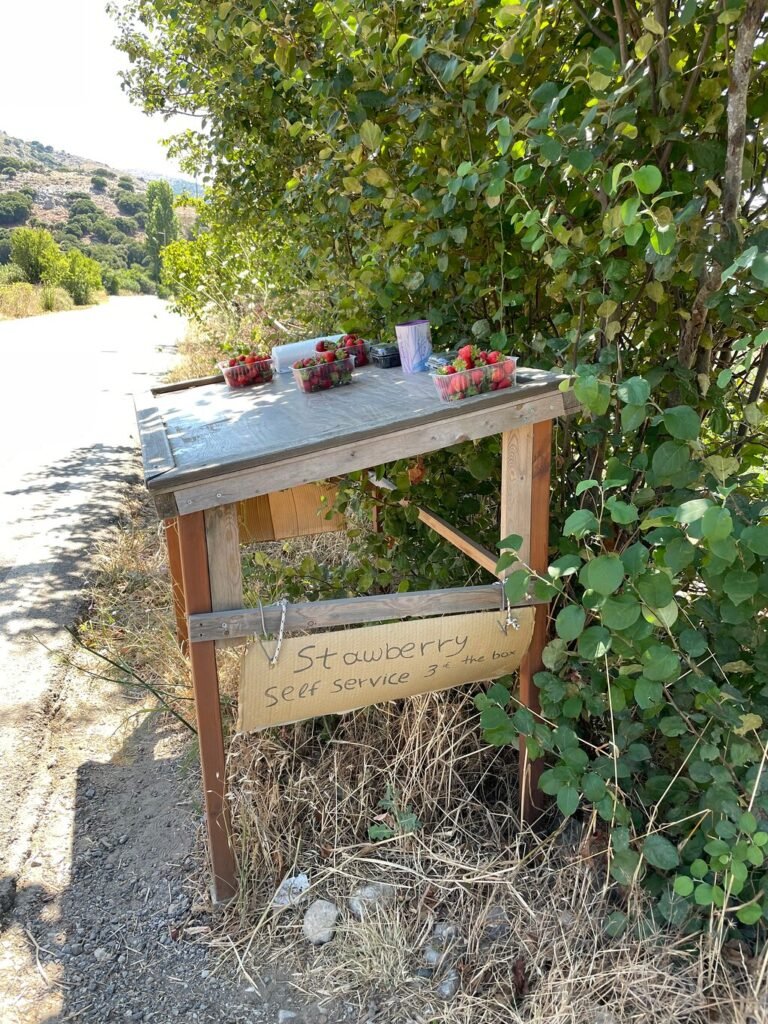
Unlike rushed bus tours that barely scratch the surface, this thoughtfully paced adventure allows you to truly immerse yourself in village life – from wandering the narrow, cobblestone streets of Mochos to sampling fresh-pressed olive oil at Omalia’s traditional press. Stop for lunch at a charming family-run mountain taverna, and stand beneath Krasi’s ancient platanus tree. The tour weaves through the plateau’s most captivating spots, including several traditional villages, with plenty of time to explore hidden corners and engage with local traditions. Want to explore these villages for yourself? Book your small-group Lasithi adventure here.
Conclusion
As our journey through 10 traditional villages in Lasithi concludes, it’s evident that this region of Crete offers a wealth of experiences for those venturing beyond the typical tourist path. From the mythological allure of Psychro to the apple orchards of Lagou, and from the Byzantine frescoes of Kritsa to the ancient ruins near Plati, each village presents its own unique charm. These ten settlements collectively showcase authentic Cretan rural life, inviting visitors to immerse themselves in local culture, savor traditional cuisine, and witness age-old crafts still practiced today.
As you plan your next Cretan adventure, consider exploring these hidden gems. They promise a side of Crete often missed – one of timeless traditions, warm hospitality, and landscapes that have inspired myths for millennia.
